Introducing Yamaha’s R7, based on the hugely popular MT-07 for those wanting their kicks on the road and track. Here is our first impression following a first ride.
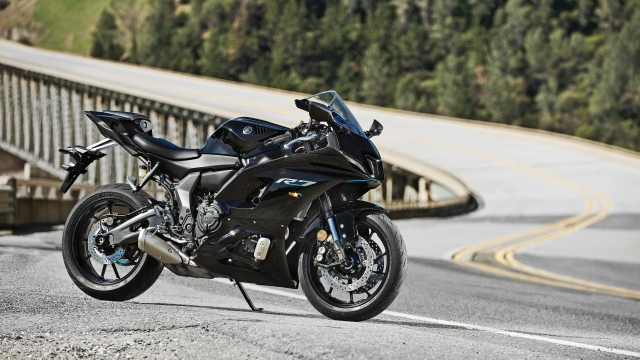
Story: Adam Child ‘Chad’
It is not every day that Yamaha launch a completely new model into their range. This is their exciting R7. A user-friendly, less radical sports bike aimed at new riders and those coming back to sports bikes, positioned above the Yamaha R3, but below the track-only R6 (Europe). The engine is the same 689-cc parallel-twin housed in the successful MT-07 — but that is where the similarities end. Updated chassis, steeper head angle, new forks and shock, not forgetting the sexy R6/R1-inspired bodywork.
Creating a new bike, based on the hugely popular and successful MT-07, was a no-brainer; in fact, I am surprised it has taken them so long. This is not a replacement for the in-line-four R6 and is similar to the original OW-02 R7 in name only. The 2022 R7 promises to deliver a balance between road and track riding, is affordable, accessible, and still carries the brand’s R-series style and look.
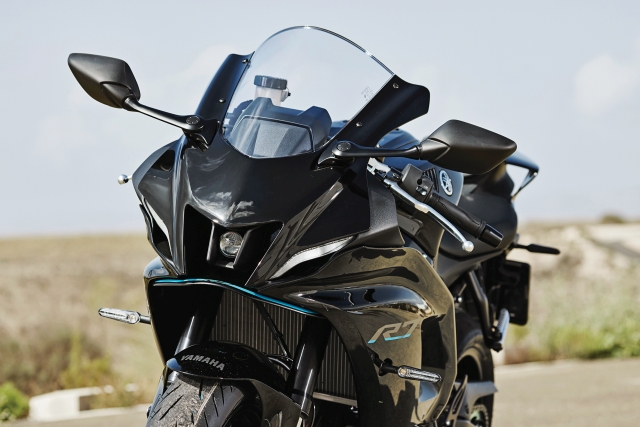
Yamaha invited us to southern Spain to test the new £8,200 (Rs 8.2 lakh) R7 on both road and track. First impressions are promising, this bike really could be the machine to re-energize the mid-capacity sports bike and could become a sales chart hit in 2022.
There are no electronic rider modes to select or rider aids to increase or decrease because there are not any! Simply jump on and ride because the fuelling and delivery are as friendly as the landlord’s dog.
The parallel twin, with its distinctive 270-degree crank, is taken directly from the MT-07. Bore and stroke, compression ratio, gearbox… everything stays the same as the engine updated in 2021 to be Euro 5-compliant. This means a peak output of 73.4 hp at 8,750 rpm and 67 Nm of torque at 6,500 rpm.

Nevertheless, Yamaha have installed a “first assist and slipper clutch” which not only improves engine braking, but also decreases the clutch lever pressure by 33 per cent. The throttle pulley routing is more direct to give a sharper, quicker feel and the gearing is lengthier, down from a 43-tooth rear sprocket to a 42-tooth one. With the R7’s enhanced aerodynamics, Yamaha claim that the new bike has an eight per cent higher top speed than the naked MT-07, but would not confirm what that was.
Leaving the hotel in southern Spain, the R7 is, as you would expect, very much like the highly acclaimed MT-07. The throttle delivery is gentle, fuelling is excellent, and the 270-crank gives the parallel twin a smooth feeling compared to similar engines with a 180-crank.
Power delivery is linear without any peaks and troughs. At 140-145 km/h, the rev-counter hovers around 6,000 rpm, still with plenty in the bank. Fast touring is not a trouble for this “entry-level” sports bike either. Chin on the fuel cap, tuck in behind the reasonably protective bodywork and 215 km/h will appear on the (rather plain) digital clocks. Stretch the cable and in favourable conditions an indicated 225 km/h could be achievable — on the clock.
Yamaha fitted their optional Quick Shift System (QSS, £134 = Rs 13,400) which works on upshifts only for the track part of the test. You need to keep the little engine busy and the QSS becomes indispensable as you live in the upper 25 per cent of the rev-range. Away from the track, the MT-07-derived engine will happily pull cleanly from low down in the rpm, but on track it adores to be thrashed, with upshifts only made when the shift lights illuminate.
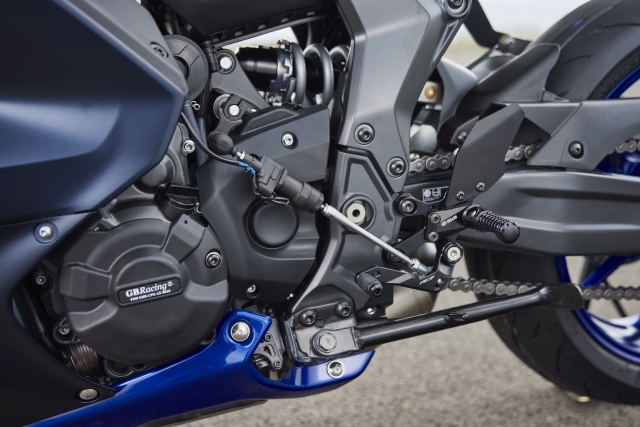
Around the technical Andalucía racetrack in southern Spain, I feared the R7 would feel like an underpowered R6 and leave the rider a little disheartened, like drinking alcohol-free beer. However, my predictions were incorrect.
The R7 has an appeal of its own: it is punchy out of the slow corners and, despite the lack of rider aids, you can get on the power very early. Inherent mechanical grip (R11 Bridgestones were fitted for the track-test) combined with unintimidating power output translate into a quick exit.
Admittedly, on the long straight it is not breathtaking: fourth and fifth gears feel long and sixth is almost too tall for the track, but, arguably, I can see the benefit for inexperienced riders. The lack of power gives you time to breathe and relax; you have time to focus on the line and have fun. Riding an R6 or an R1 on the edge can be hard both mentally and physically, but the R7 is not.
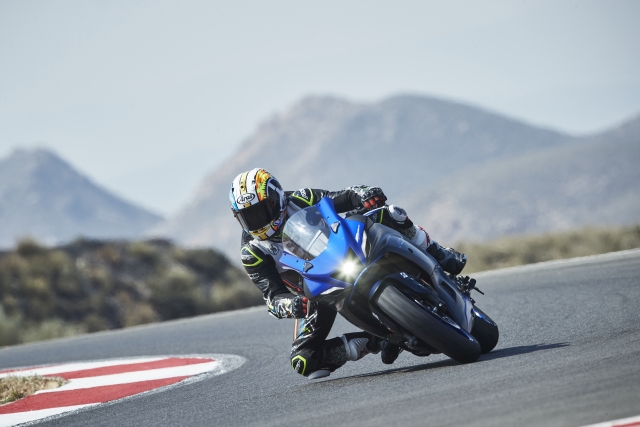
On the road, I had few complaints from the new radial mounted stoppers. There is nice feel at the adjustable lever and new or inexperienced riders will feel reassured. On the track, the brakes are more than powerful enough to control this lightweight bike as long as you are not pushing for the lap record.
At the end of the fifth-gear back straight, the ABS was a little obtrusive and trying to feel the last percentage of braking power was vague. You cannot feel the pads gripping. If you opted to race an R7, you would need to remove the ABS and uprate the pads for a better feel. Race brakes are available in the GYTR racing package.
In the bends, many will compare the new R7 with the MT-07, but this is an entirely new bike and not an MT-07 with some attractive bodywork included. The chassis has more rigidity, the steering head angle is steeper, the rear has been lifted via a new linkage and a revised rear shock, wheelbase is shorter (by five millimetres), and there are completely new KYB forks, now inverted and fully adjustable. The centre of mass has moved forward while the rider, a large percentage of the overall mass, of course, is positioned much more R6 than MT-07.
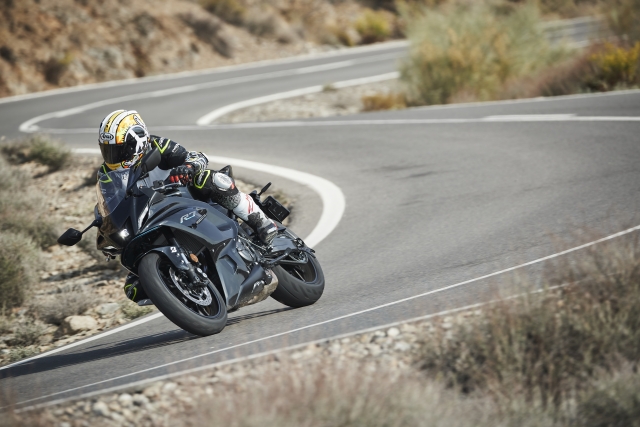
Despite its racy and aggressive looks, the R7 is forgiving. The ride is on the soft side of sporty, this is not like a harsh supersport machine. The R7’s focus is on real-world bumps and road decay. The suspension has plenty of travel and movement, which instils confidence into the rider, especially the inexperienced one.
You can feel what is happening beneath you and feel at home on the R7 from the off. Riding hard in southern Spain, it is involving and tremendous fun. Riding in the mountains devoid of traffic and police, I did not want to stop for lunch. Knee-down left to knee-down right with minimum effort. I cannot remember the last time I rode any bike on the road and had so much fun whilst remaining composed and not scaring myself or others.
As you only have 73.4 hp to play with and the chassis is compliant, you are in control, not the opposite. You have time to work out the corner, see it open up, and get on the power early. Instead, you can leave the R7 on its side, knee skimming to the road, just for the hell of it. Grip and feedback are truly excellent.
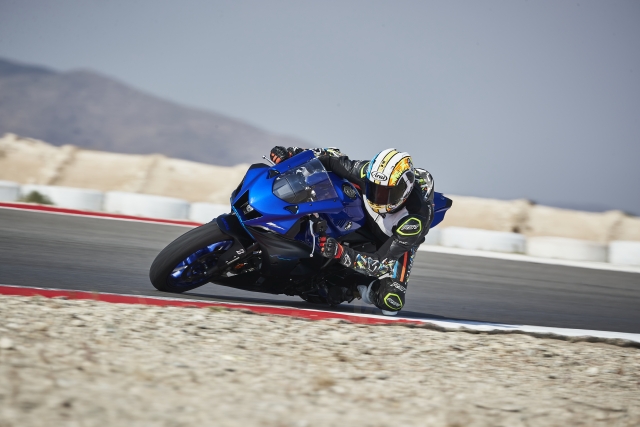
When you push on to track-day speeds on the road, the standard suspension needs more support. Brake heavily and the forks dive too rapidly and with too much travel and the rear is on the soft side. But this bike is aimed at new riders or those lacking experience, not former racers pushing the boundaries of grip and treating the roads like the TT.
On track, Yamaha cleverly fitted track-day rubber and tweaked the suspension to match. Again, like the motor, I was not disappointed. In fact, the little R7 was a real surprise.
Considering the R7’s attractive price, the chassis and suspension perform above expectations on track. The Spanish Andalucía track is hard to learn and demanding, but the R7 made easy work of it. With the tweaked suspension, I could now brake later and with more fork control. The turn-in and roll into the corner were lovely, not razor-sharp, but easy enough. Once on its side, the R7 consumes corner speed and will carry impressive levels of lean, to elbow-down levels should you want to show off. Toe sliders touch, but I had no problem with ground clearance, unlike other bikes in this class. On exits, the rear shock takes the strain of the relatively low power, the sticky rear Bridgestone grips, meaning you can get on the power early, again and again, the absence of electronics completely forgotten as you chase the perfect lap.
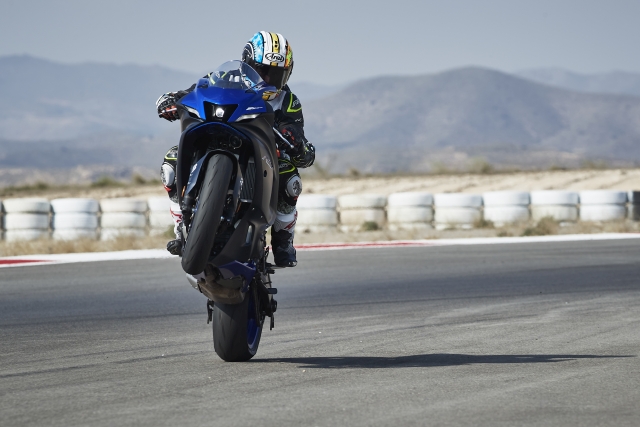
Oh, yes, the rider aids. The lack of rider aids will split opinion. I did not feel short-changed just because the R7 lacked any traction control or cornering ABS. The fuelling is practicable, the suspension feedback is excellent for this type of bike, and we rode in perfect conditions.
However, I grew up when we only had black-and-white television sets and I was riding angry two-stroke without any rider aids at 17 and this bike is aimed at new or inexperienced riders who will probably ride all year round. In cold or damp conditions, will the lack of rider aids concern some buyers, especially when other models have far more advanced rider aids?
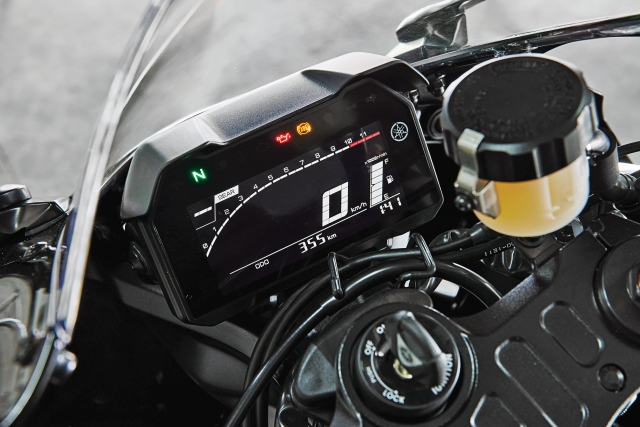
The main competition to the R7, Aprilia’s RS660, has lean-sensitive rider aids and optional riding modes, but it costs £2,000 (Rs 2 lakh) more. But even KTM’s new RC390, which is not a direct competitor but is certainly sporty, has basic lean-sensitive rider aids and is expected to be priced below £6,000 (Rs 6 lakh), considerably cheaper than the R7.
Yamaha already had the excellent MT-07 and their line-up was missing a middleweight sporty road bike. It was an obvious and clever decision for them to produce this bike. But it was not easy. Producing an affordable, attractive machine capable of cutting it on the track and being easy to live with and manageable and at a competitive price was a big ask — but they have done that. Young and old will appreciate the styling, especially for the price. On the road, it is fun and easy and can seriously cut it.
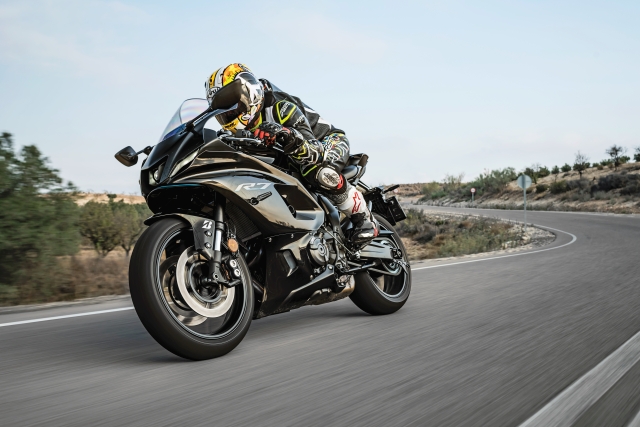
Tweak the new suspension and the admiration continues on the track. So long as you are not up against superbikes on a fast track, you will wear an idiotic smile all day long. I did. On the track and on road ridden at pace, I felt young again, enjoying sporty riding without doubling the speed limit or scaring myself. There is enough power to raise your heart rate and the front wheel, but not enough to send your brain into panic mode.
This is a terrific bike, one that re-ignites this market segment and makes it even more exciting than ever. The R7 should attract a wave of new young riders to the joy of sports bikes.


Leave a Reply